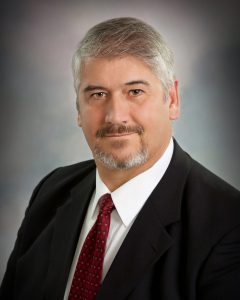by Mark Browning
College of Western Idaho
Boise, ID
 Like many of you, we at the College of Western Idaho have been searching for effective ways to connect with students during the COVID-19 Pandemic.
Like many of you, we at the College of Western Idaho have been searching for effective ways to connect with students during the COVID-19 Pandemic.
Our students, like most metro-area community colleges, are largely part-time (over 65%). We don’t have a centralized campus and are widely dispersed throughout the Boise/Nampa area of southwestern Idaho.
After considering the most effective way to reach our students, we opted for a Facebook Live approach. We’ve had a good deal of success with the medium over the last couple of years.
With our enrollment and student service peers, we crafted and sent out multiple communications to students asking for their questions, concerns and general outlook. Emails flooded in. We combed through the questions as a team, separating topics to be addressed by relative area.
We pushed social channels to drive attendance. We did a full rehearsal the day before. Everything went off without even the smallest hiccup.
We were ready. We thought.
Game Day came, and we threw the switches on. Then boom! There was audio feedback on microphones, echoing and more. Immediately, comments about the feedback came pouring in on the Facebook Chat – one right after the other. The minutes were painful. We tried to calm the frothing masses. And just before it seemed as though it was going to go from bad to worse – here came the faculty!
Yes, our faculty came to our rescue. Without prompting, they offered reassuring messages and help, and they asked everyone to be patient. The tide turned. It was amazing. The help allowed us to figure out the audio issue – participants simply had to turn down their speakers – and get back to the Facebook Live content.
Forty-some minutes later we wrapped and looked at each other (virtually, of course) and said – WOW!
So what did we learn?
- Facebook Live is an effective tool to engage students. Like most, our students don’t engage us socially on Facebook but they look to it as the established channel for information. It served us well in this time of uncertainty.
- We went 40 minutes and covered a number of topics, some several times over. Judge for yourself how comfortable your “on-air” people are, but after about 40-45 minutes comments begin to repeat.
- The topics varied significantly – what to do about proctored testing, how to do labs, what about commencement, etc. Be prepared to talk about how financial aid, tutoring and library services are impacted. Our governor issued a “stay-at-home” order for the entire state just 90 minutes before we went live, so we also spent a considerable amount of time addressing the implications and nuances of the order.
- Our provost, dean of students and assistant vice-president for enrollment and student services served as panelists, and our communications specialist was the host. If we were to do this again, we’d exclude the assistant vice president and include a representative from financial aid – specific departments are most effective.
- We logged all of the comments. ALL of the comments – likes, dislikes, emojis etc. That list of information and feedback is an invaluable resource as we target our communications and service efforts.
It’s a wild ride right now in the world of community college communications. Taking on a Facebook Live event will certainly add to the rodeo, but if you can prepare and cinch up tight, the crazy 8-seconds equivalent will be worth the score you’ll land for supporting your students, faculty and college.
Mark Browning is the vice president for college relations at the College of Western Idaho in Boise/Nampa, Idaho, which serves over 32,000 students in multiple locations. He was NCMPR District 7 director from 2013-2015 and is the 2019 District 7 Communicator of the Year.


STAY CONNECTED